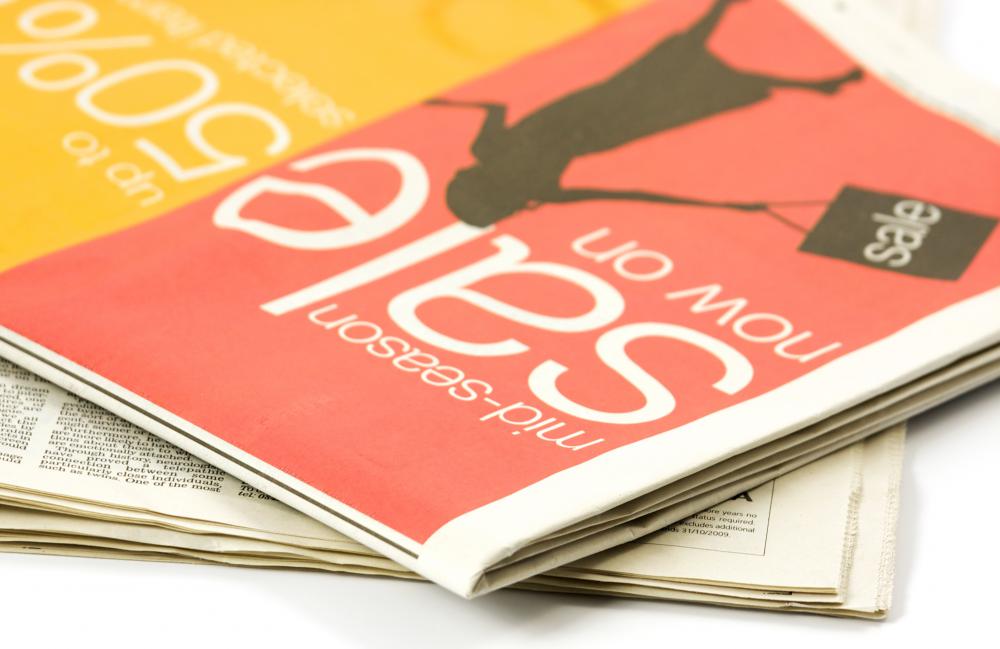At WiseGEEK, we're committed to delivering accurate, trustworthy information. Our expert-authored content is rigorously fact-checked and sourced from credible authorities. Discover how we uphold the highest standards in providing you with reliable knowledge.
What Factors Affect the Cost of Print Advertising?
Print advertising — such as newspaper ads, fliers and brochures — remains one of the most popular advertising methods, despite the advertising avenues opened up by new technologies, but the cost of print advertising may make it difficult for some new companies to market themselves. Paper is one of the main factors affecting the cost of print advertising, because thicker paper costs more than thin paper. Color choices — whether color or black-and-white print — also will determine how much a business has to pay for print ads. Bulk ordering commonly drives down the printing costs, because printing companies will charge less per print once the equipment has been set up for a particular job. Turnaround time also is a consideration for many print companies, and some charge extra for expedited service.
When a company commissions a print company for a job, one of the first decisions the company needs to make is about paper. There are many different paper types: glossy, matte, colored, flat, dull, photo and card stock, among others. In general, thicker paper with coatings, such as a glossy coating, will cost more than thin paper without coating; at the same time, thicker paper also is a higher-quality paper and may be worth the additional cost. The amount of paper used, or the size of the print, also will be a factor that affects the cost of print advertising.

Ink is the second factor that affects the cost of print advertising. In the past, the amount of colors used affected the price — a print with red and green would cost less than a print with red, green and blue, for example — but this is rarely a consideration in 2011. What is a consideration is whether the print is color or black-and-white. Advertisements printed with color cost more but are generally more visually striking than advertisements printed in black and white.

The number of prints ordered affects the cost of print advertising, because many printing companies offer discounts for bulk orders. If a company orders 100 prints, and another company orders 1,000 prints, the one ordering 1,000 will pay less per print than the company ordering 100. This is because, with higher order numbers, the printing company can afford to lower the price per print and still make a profit. Unless the company will be changing around its advertising designs regularly, it is suggested that companies make bulk orders.
Some print companies will charge an extra fee for expedited turnaround time, while other print companies will finish jobs on a first-come, first-served basis. With the former, the print company will charge an extra fee to get the job done a few days earlier, so the advertising business can get its marketing materials sooner. To avoid the need for extra turnaround charges, it is best if the company orders the prints as soon as possible to drive down the cost of print advertising.
AS FEATURED ON:
AS FEATURED ON:












Discuss this Article
Post your comments